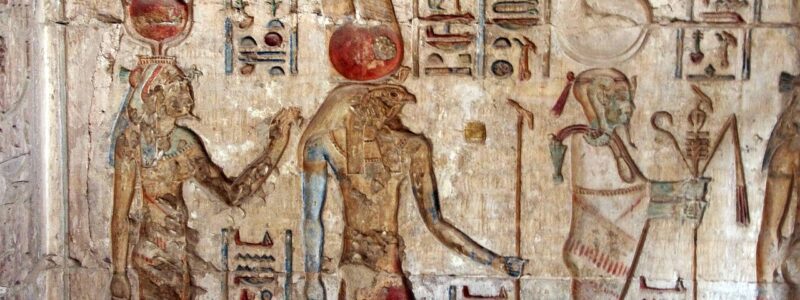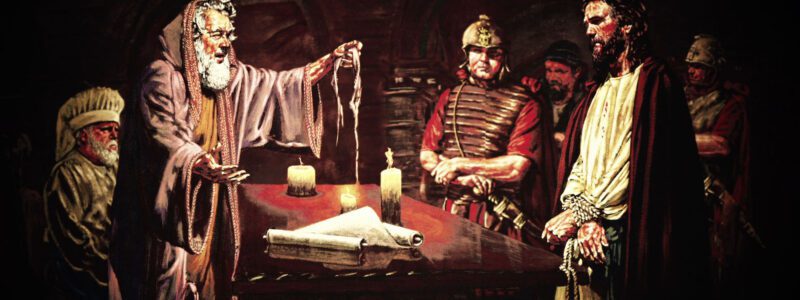The Body was Taken
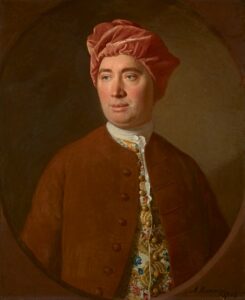
David Hume: By Allan Ramsay – https://www.nationalgalleries.org/art-and-artists/60610/david-hume-1711-1776-historian-and-philosopher-1754, Public Domain, Link
Skeptics counter the Christian’s claim that Christ was resurrected with the assertion that the body was taken. It certainly seems a lot easier to believe that the body was somehow taken and disposed of somewhere rather than believe in a miracle. As David Hume, the famous Scottish philosopher of the 18th century noted, the resurrection might have happened, but it is much more likely something else occurred.
We need to answer that skepticism before believing in a miracle of any kind. Modern scientists discount an Intelligent Designer in a similar manner. They would argue if we do not know how life came to the Earth or how the Universe was created, then just wait.
Science will always find a way (to paraphrase Jurassic Park).
Episcopalian Bishop John Spong
Even prominent theologians propose alternatives to the resurrection and even leaders of some Christian denominations believe the resurrection never occurred. Perhaps the most famous is Episcopalian Bishop John Spong who authored A New Christianity for a New World.
One of Spong’s arguments that our modern, scientific “post-Newtonian” world can no longer believe in miracles, especially not the miracle of the resurrection. In a rather confusing statement, he noted,
“Easter, for me, is eternal, subjective, mythological, nonhistorical, and nonphysical. Yet Easter is also something real to me.
He further elaborates,
“Did Easter reverse the verdict of Jesus’ death? No, I don’t think so. … I think Easter is real, but it is not an event that takes place inside human history.
In the typical double-speak of modern theology, Spong presents the idea that the resurrection is not historical but it is real.
Modern Theology and the Resurrection

Bishop Spong: By Scott Griessel, creatista on flickr.com – From https://www.flickr.com/photos/creatista/353362001/ — I, Wikipedia:User:Coelacan, have adjusted the colors., CC BY-SA 2.0, Link
In his book, Bishop Spong goes on to explain the meaning of his confusing statements.
He relates an imaginative story concerning the origin of the resurrection “myth” as occurring after Christ’s death when the fishermen disciples were eating fish next ot the Sea of Galilee.
“Simon, as the oldest member of the group, did the ceremonial blessing. Images flowed together: the psalm of Tabernacles, “I shall not die, but I shall live”; the words of Zechariah, “They looked on him whom they pierced”; and that awful night when Jesus took bread, blessed it, broke it, and gave it to them calling that bread his body…
Suddenly it all came together for Simon. The crucifixion was not punitive, it was intentional. The cross was Jesus’ ultimate parable, acted out on the image of history, to open the eyes of those whose eyes could be opened in no other way to the meaning of Jesus as the sign of God’s love….
That was the dawn of Easter in human history. It would be fair to say that in that moment Simon felt resurrected. The clouds of his grief, confusion, and depression vanished from his mind, and in that moment he knew that Jesus was part of the very essence of God, and at that moment Simon saw Jesus alive…
With a burst of animation, Simon tried to bring his breakfast mates into his vision. He tried to open their eyes…. The bread in his hand was broken over and over until light dawned to James, John and Andrew.
The New Easter Story!
This argument specifically counters the entire Biblical Easter story and imagines Christ died on the cross and the body did what all bodies do. Nothing to see here – move on!
Why the ignominious death of an itinerant preacher coupled with preaching by ignorant fishermen should turn the world upside-down is not addressed. Rather, it is all but a fable; all of Christ’s disciples and countless thousands of their contemporary Christians went readily to their torture and death for a fiction.
Other modern religious scholars have more well-developed ideas.
Dominic Crossan Has Gone to the Dogs

Dominic Crossan: By Donald Vish – originally posted to Flickr as 11 08_6972 John Dominic Crossan, CC BY 2.0, Link
Crossan gained fame for being the co-founder of the infamous Jesus Seminar. Briefly, this group of liberal theologians would vote on what portions of the New Testament and its miracles were real historical events and which were fictional.
Needless to say, most are voted as fictional. The New Testament is eviscerated into a few shreds of unrelated history with little resemblance to modern Christianity.
Crossan’s theory stipulates that Christ’s body was disposed of in the same way that all Roman crucified bodies were discarded. The bodies rotted on the cross until they fell to the ground to be eaten by dogs, thrown into the city garbage heap, or tossed into a shallow communal grave.
Again, this man with countless liberal religious accolades would totally ignore any possibility of a bodily resurrection. Nothing to see here; move on.
Crossan and Historical Evidence
Do his views match the historical evidence? First, there is no historical evidence that Christ’s body was left to rot. The historical evidence from both Christian and non-Christian contemporary sources is that the body disappeared.
Whether that disappearance was due to resurrection or other circumstances will be addressed shortly, but there is no historical evidence for a dog Easter story.
The Roman and Jewish authorities were very interested in knowing exactly what happened to the body. They wanted to prevent a loss of the body to dogs or otherwise to prevent just what happened. They wanted to prevent Christ’s followers from proclaiming a resurrection.
Crossan discounts any evidence that Christ was buried in a borrowed tomb from Joseph of Arimathea. Joseph was not just any rich man, but a leader of Israel belonging to the ruling Sanhedrin.
It is curious Crossan accepts the reality of the crucifixion but not the internment in a rich man’s tomb. The same documents which portray the crucifixion also discuss the burial.
It would have been an easy counter-argument from the Jewish authorities and Romans that the dogs ate Christ’s body. They would have had witnesses to the dog feast which could easily be brought forward. Yet there is no history of this defense being used by any religious or secular authority.
The main argument against the resurrection by local authorities was that the disciples stole the body.
Body Snatchers
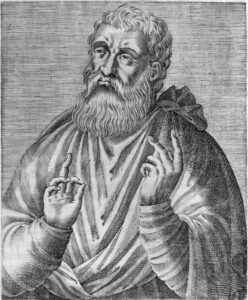
Justin Martyr: By André Thévet – Saint Justin dans André Thevet, Les Vrais Pourtraits et Vies Hommes Illustres, 1584, Public Domain, Link
The main argument against the resurrection spread during the early Christian centuries was the body was stolen.
Scripture records how the Jewish authorities bribed Roman soldiers to report Christ’s body was stolen by his disciples. This is curious because Roman soldiers so derelict in their duties of guarding a tomb would likely have been crucified themselves.
Justin Martyr was a second-century Christian who defended Christianity against the Romans. He wrote in his Dialogue with Trypho about this theft idea,
…yet you not only have not repented, after you learned that He rose from the dead, but, as I said before, you have sent chosen and ordained men throughout all the world to proclaim that a godless and lawless heresy had sprung from one Jesus, a Galilean deceiver, whom we crucified, but his disciples stole him by night from the tomb, where he was laid when unfastened from the cross, and now deceive men by asserting that he has risen from the dead and ascended into heaven.
Reburial by Juda
Another theory proposed by a document called Toledoth Jesu In this polemical work, Jesus was originally crucified and buried in Joseph’s tomb as related by Scripture. However, a gardened named Juda heard about the plans of Christ’s disciples to steal the body and proclaim a resurrection.
In order to prevent this, the loyal Jew himself stole the body and placed it in another grave. He had access to the many graves as he was a gardener. He informed the local Jewish leaders and sold the body to them for 30 pieces of silver.
The Jewish leaders were anxious to dispel any rumors of resurrection and dragged the body through the streets of Jerusalem.
There is some historical evidence that the document is ancient with some references dating to the ninth century, and possibly to the fourth century. Jewish scholars have largely rejected this document because it is as offensive to Jews as it is to Christians.
Reburial Documents Bullying of Christ
In this portrayal of ancient Judaism, Christ – a wise man – is bullied by his peers,
“And it came to pass in those days, that the court of that place would adjudicate the cases of the people, but they would pervert their judgments for bribes and out of favoritism. This Jesus the Nazarene would sit with them and reprove them, time and again, about justice. They would threaten him, and he would remonstrate with them about it in a quarrel […] He became a thorn in their side, and so they sought a pretext to distance him from his seat among them […] [When Jesus left on a errand to a village,] the court summoned his mother Mary, after her husband Joseph had died, and made her swear by the Name that “you shall tell us whence this young man Jesus came to you, whose son is he? For he has been impertinent with us.” […] Upon Jesus’ return from the village, he came to sit in his usual seat. The court rose and hustled him, saying to him thusly: “A bastard shall not enter into the Congregation of the Lord.” He said to them: “Even were it as you say, I am wiser and more fearful of God than you, and I will not withhold His reproof from you.” […] They answered him: “From now on we shall not heed your words; you shall not even sit amongst us, for you are a bastard.” He pleaded with them but they would not be appeased. At last he grew weary and distant on account of their determination, and “Jeroboam went astray.”
If this document were found in the first century it would be much more concerning than in the fourth and later centuries.
Jewish scholars have largely rejected this document as being genuine as it is highly offensive to Judaism. They have traditionally taught a different view than dragging Christ’s dead body through the streets.
Body Stolen by Grave Robbers
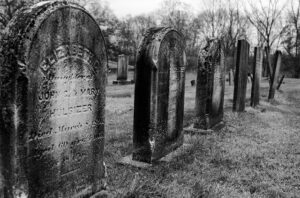
Image by Brent Connelly from Pixabay
This proposal has the body of Christ stolen from the tomb by grave robbers. This has been suggested by atheist Richard Carrier. He notes the grave robber hypothesis,
“demonstrates the plausibility (but by no means the certainty) of the hypothesis that the body of Jesus was stolen.
Carrier raises the argument from silence after another, even suggesting that the resurrection account is a retelling of “Daniel in the lion’s den.”
There is not a single shred of evidence to support Carrier’s claim of body snatchers – it is unclear why that could be the case. Christ’s body was a mangled mess after torture by Roman soldiers and a crucifixion. There would be nothing on his naked body to rob.
There is no reason for the Romans or Jewish authorities to steal the body; they were trying to prevent such an occurrence. The authorities knew Christ forecast a resurrection and they needed to have tight control over any future evidence.
A theft would also be difficult as the body was guarded by Roman soldiers whose life as on the line. If they were found to be derelict in their duty, the Roman soldier would likely have been killed. Carrier notes the body was unsecured from the time of the crucifixion until the next day as noted in Matthew 27:62. Carrier supposes the soldiers did not make sure the body they were guarding was still in place.
Then there is also the problem of the massive stone. These stones were common in ancient Jewish graves to protect the body from animals and thieves. Moving such stones was very difficult requiring multiple adult men. Scripture reports it was rolled down a slope by Joseph and Nicodemus to seal the tomb after the body was placed inside. (John 19:38-42).
Disciples Stole the Body
This is the most common excuse for the missing body after the crucifixion. Several church fathers including Justin Martyr and Tertullian spoke about the Jewish argument that the body was stolen.
This is substantiated by Scripture which reports,
“Now while they were going, behold, some of the guard came into the city and reported to the chief priests all the things that had happened. When they had assembled with the elders and consulted together, they gave a large sum of money to the soldiers, saying, “Tell them, ‘His disciples came at night and stole Him away while we slept.’ And if this comes to the governor’s ears, we will appease him and make you secure.” So they took the money and did as they were instructed; and this saying is commonly reported among the Jews until this day.” (Matthew 28:11–15)
Some apologists claim that it was the Jewish temple guard rather than Roman guards who were on duty when the body was secured. Most scholars believe Roman guards were on duty those nights. David MacLeod notes,”
That it was Roman soldiers and not temple police who guarded the tomb is more likely for four reasons: First, they would not have needed Pilate’s permission to use the temple police. Second, in [Matthew] 28:12 the soldiers are identified with the same word (στρατιώτης) used in [Matthew] 27:27, where the soldiers are undoubtedly Roman. Third, [Matthew] chapter 28 (v. 14) implies that the soldiers are answerable to Pilate. Fourth, the Greek can be understood to mean this. (David J. MacLeod, “The Resurrection of Jesus Christ: Myth, Hoax or History, 1998).
Problems with Stealing a Body

Image by TheDigitalWay from Pixabay
There are several problems with the theory that the disciples stole the body. First, they are all in hiding.
All of them figure the jig is up – they are now identified with a crucified Roman criminal and likely will be arrested soon. The last thing they want is to be seen in public, let alone be anywhere near Roman guards.
Even if somehow they conspired to steal the body, would they all be willing to be tortured and die for a hoax? They are fishermen who went back to fishing immediately after the resurrection. They likely figured it was fun while it lasted but now they have to make a living.
Then there is the interesting excuse by the Roman guards recorded in Scriptures,
“His disciples came at night and stole Him away while we slept. (Matthew 28:13).
It is difficult to understand how the soldiers knew who stole the body if they were sleeping. The best skeptical argument turns out to be self-refuting.
Over the centuries, this has been the most relied upon excuse for a missing body – other than a resurrection.
Conclusion
Each of these explanations proposed by critics over the centuries to explain away any resurrection proposes something else that happened to that body.
Each of these arguments stipulates that Christ actually died on the cross; what happened later is open to question.
Some propose the Roman soldiers apparently were guarding an empty tomb as his body had been eaten by dogs or already buried. Others propose the terrified disciples somehow managed to move a huge rock uphill, break a Roman seal, and steal a body. They did all of this while Roman guards were nearby whose lives depended upon securing that body.
These excuses all fail for various reasons. We will move on to different excuses in another article.

